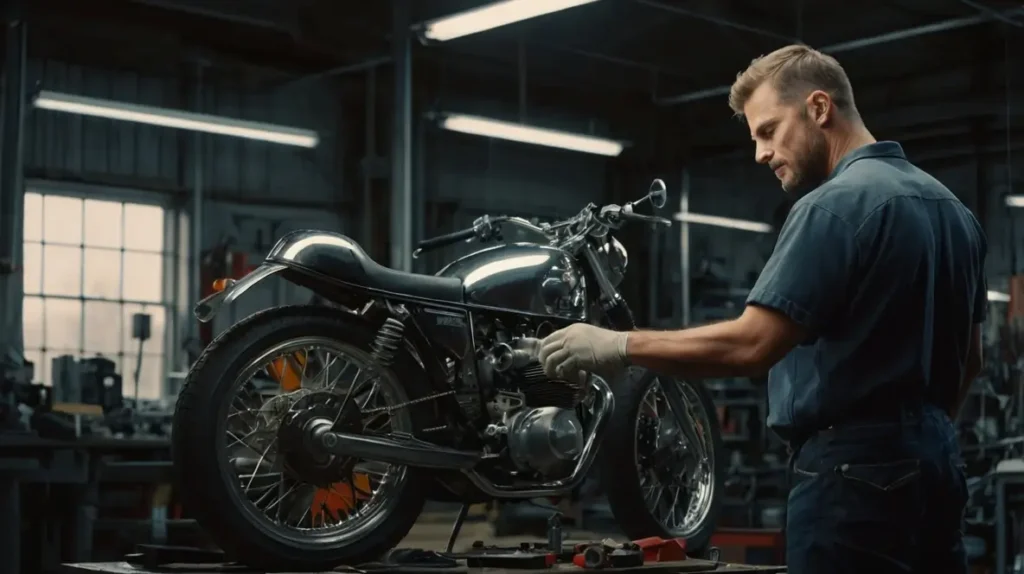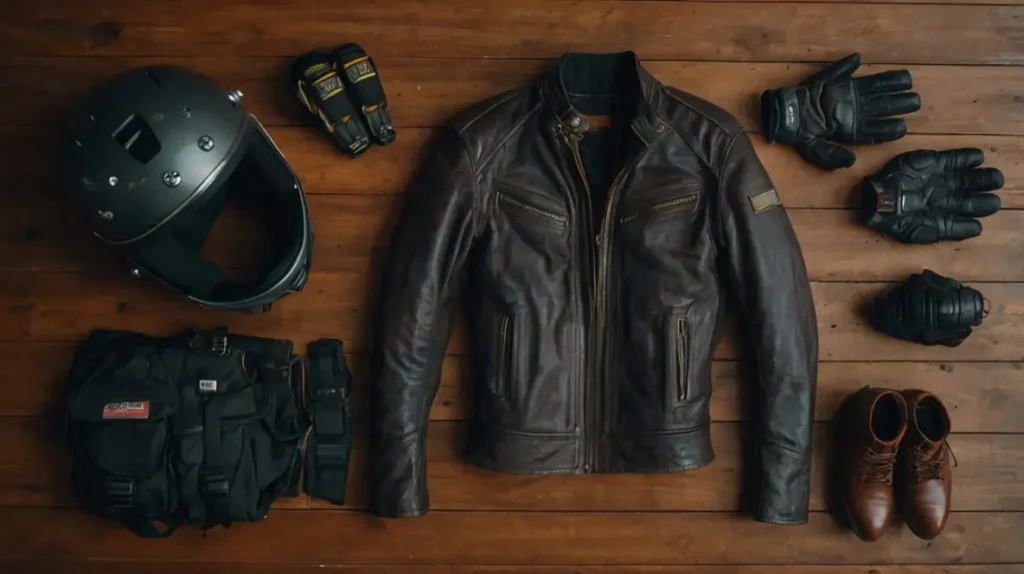Motorcycling is a thrilling way to explore the open road, but it comes with unique risks that require serious attention to safety. Understanding and implementing essential safety measures can significantly reduce the likelihood of accidents and injuries. This guide offers a detailed look into key aspects of motorcycle safety that every rider should prioritize.
In This Guide
1. The Importance of Protective Gear
Helmets: The First Line of Defense
Wearing a helmet is non-negotiable for any motorcyclist. Helmets are designed to protect your head in the event of a crash, and their effectiveness can’t be overstated. Studies show that riders who wear helmets are significantly less likely to suffer fatal head injuries. When selecting a helmet, ensure it meets safety standards such as DOT or ECE certifications. Choose a full-face helmet for maximum protection, as it shields not just your head but also your face and jaw.
Protective Clothing
In addition to helmets, wearing protective clothing is crucial. This includes:
- Jackets: Look for jackets made from durable materials like leather or specialized fabrics designed for abrasion resistance. Many jackets come with built-in armor at critical areas such as shoulders, elbows, and the back. For those starting out, investing in good gear is essential, especially when choosing the best motorcycle for beginners, as it ensures a safer riding experience.
- Pants: Invest in motorcycle-specific pants made from reinforced fabrics. Some options come with armor at the knees and hips for added protection.
- Gloves: Good-quality gloves enhance grip and protect your hands. Choose gloves that cover your wrists and have padding on the knuckles.
- Boots: Your footwear should provide ankle support and a firm grip on the footpegs. Opt for boots made from leather or synthetic materials specifically designed for riding.
Visibility Gear
Visibility is a significant concern for motorcyclists, especially at night or in adverse weather conditions. Wearing reflective or high-visibility gear can greatly enhance your chances of being seen by other drivers. Consider vests, jackets, or even decals that reflect light.
2. Regular Motorcycle Maintenance

Keeping your motorcycle in top shape is essential for safe riding. Regular maintenance helps prevent mechanical failures that can lead to accidents.
Key Maintenance Checks
| Maintenance Check | Importance |
|---|---|
| Tires | Proper tire pressure and tread condition ensure grip and stability. |
| Brakes | Regular inspection prevents brake failure and ensures safety during stops. |
| Fluids | Keeping engine oil, brake fluid, and coolant at appropriate levels maintains optimal performance. |
Pre-Ride Inspection
Before every ride, conduct a quick pre-ride inspection. Look for any obvious issues, such as:
- Tire condition and pressure
- Functionality of lights and signals
- Brake performance
- Fluid levels
Taking a few minutes to check your bike can make a significant difference in your safety.
3. Defensive Riding Techniques

Defensive riding is about being proactive rather than reactive. It requires heightened awareness and the ability to anticipate the actions of other road users.
Stay Aware
Always be conscious of your surroundings. Regularly check your mirrors and keep an eye on the behavior of other vehicles. Watch for drivers who might be distracted or behaving erratically.
Maintain Safe Distance
Keeping a safe following distance from the vehicle in front of you is critical. This gives you ample time to react if the vehicle suddenly stops or swerves. A distance of at least two seconds is recommended in good weather conditions; increase this distance in poor weather or heavy traffic.
Anticipate Potential Hazards
Be prepared for sudden changes in the road environment. Look for signs of potential hazards, such as:
- Cars signaling to turn
- Pedestrians crossing the street
- Road construction or debris
Anticipating these actions can help you react quickly and avoid dangerous situations.
4. Riding in Different Weather Conditions
Weather can significantly impact your riding experience and safety. Adapting your riding style to different conditions is crucial.
Rain and Wet Roads
Riding in the rain poses unique challenges. Wet roads can reduce your tires’ grip, increasing the risk of skidding. Here are some tips for riding in the rain:
- Slow Down: Reduce your speed to maintain control. Slippery surfaces require more caution.
- Brake Smoothly: Apply brakes gently to avoid locking up the wheels. Use both brakes in a controlled manner.
- Avoid Puddles: Puddles can hide deeper hazards. Try to steer clear of them whenever possible.
Riding in Fog
Fog reduces visibility dramatically. If you find yourself riding in foggy conditions, follow these guidelines:
- Use Low-Beam Headlights: High beams can reflect off the fog and impair your visibility even further. Low beams are more effective.
- Ride Slowly: Decrease your speed to give yourself more time to react to unseen obstacles.
Windy Conditions
Strong winds can affect your balance and control. When riding in windy conditions:
- Adjust Your Position: Lean slightly into the wind to maintain balance.
- Be Cautious Near Large Vehicles: Passing trucks or buses can create wind gusts that may destabilize your bike.
5. Understanding Road Hazards
As a motorcyclist, you must be aware of potential road hazards that can jeopardize your safety. Recognizing and navigating these hazards is vital for safe riding.
Common Hazards
| Hazard Type | How to Navigate |
|---|---|
| Gravel and Loose Debris | Avoid sudden movements; ride smoothly. |
| Potholes and Road Imperfections | Slow down and navigate around them safely. |
| Railroad Tracks | Cross at a right angle to minimize risk. |
6. The Role of Motorcycle Training
Continuous learning is crucial for every motorcyclist. Even experienced riders can benefit from advanced training courses that focus on skill enhancement and emergency preparedness.
Taking a Safety Course
Many organizations offer motorcycle safety courses that cover essential riding skills and defensive techniques. These courses can significantly improve your confidence and ability on the road. Some key benefits include:
- Skill Improvement: Learn techniques that can help you handle your motorcycle more effectively.
- Emergency Preparedness: Understand how to react in various emergency situations.
- Insurance Discounts: Completing a safety course may qualify you for discounts on motorcycle insurance.
7. What to Do in Case of an Emergency
Even with the best precautions, emergencies can still occur. Knowing how to react can make a difference.
After an Accident
If you find yourself in an accident, follow these steps:
- Assess the Situation: Check yourself and others for injuries. If safe, move to a secure area away from traffic.
- Call for Help: Contact emergency services and report the accident.
- Document the Scene: Take photos of the scene, vehicles involved, and any visible injuries. This information can be helpful for insurance claims later.
Breakdown Protocol
If your motorcycle breaks down, remember to:
- Move to Safety: Pull off the road as far as possible to avoid traffic.
- Use Hazard Lights: Turn on your hazard lights to increase your visibility to other drivers.
- Stay Calm: Wait for assistance and don’t attempt repairs if you’re unsure of what to do.
8. Frequently Asked Questions (FAQs)
Q1: What should I do if I’m involved in a motorcycle accident?
A1: Check for injuries, move to a safe area, call emergency services, and document the scene with photos and notes.
Q2: How often should I perform maintenance on my motorcycle?
A2: Regular maintenance should be done at least once a month, with a thorough check before long rides. Always inspect tires and brakes before each ride.
Q3: Are there any specific riding techniques for night riding?
A3: Yes, use low-beam headlights, wear reflective gear, and reduce your speed to enhance visibility and reaction time.
Q4: What is the best way to improve my riding skills?
A4: Enroll in a motorcycle safety course that offers both classroom instruction and practical riding exercises.
Q5: How can I enhance my visibility to other drivers?
A5: Wear high-visibility clothing, use reflective materials, and always ride with your headlights on, even during the day.
Conclusion
Motorcycle safety is a multifaceted responsibility that requires commitment and awareness. By wearing the right gear, maintaining your motorcycle, practicing defensive riding, and being prepared for emergencies, you can significantly enhance your safety on the road. Embracing these essential safety measures not only protects you but also allows you to fully enjoy the exhilarating experience of riding. Remember, every ride is an opportunity to improve your skills and awareness, making you a safer and more responsible rider. Stay safe and enjoy the journey!

